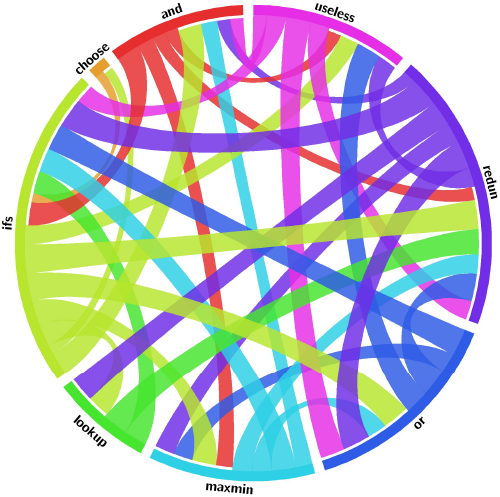Authors
Jie Zhang, Shi Han, Dan Hao, Lu Zhang, & Dongmei Zhang
Abstract
Spreadsheets are the most popular end-user programming software, where formulae act like programs and also have smells.
One well recognized common smell of spreadsheet formulae is nest-IF expressions, which have low readability and high cognitive cost for users, and are error-prone during reuse or maintenance. However, end users usually lack essential programming language knowledge and skills to tackle or even realize the problem.
The previous research work has made very initial attempts in this aspect, while no effective and automated approach is currently available.
This paper firstly proposes an Abstract Syntax Tree (AST)-based automated approach to systematically refactoring nest-IF formulae. The general idea is two-fold. First, we detect and remove logic redundancy on the AST. Second, we identify higher-level semantics that have been fragmented and scattered, and reassemble the syntax using concise built-in functions.
A comprehensive evaluation has been conducted against a real-world spreadsheet corpus, which is collected in a leading IT company for research purpose. The results with over 68,000 spreadsheets with 27 million nest-IF formulae reveal that our approach is able to relieve the smell of over 99% of nest-IF formulae. Over 50% of the refactorings have reduced nesting levels of the nest-IFs by more than a half.
In addition, a survey involving 49 participants indicates that for most cases the participants prefer the refactored formulae, and agree on that such automated refactoring approach is necessary and helpful.
Sample

We refactor nested-IF formulae using nine patterns and alternative functions:
- Redundant. Logic redundancy is removed to simplify the nested-
IFformula. AND.OR.CHOOSE.MATCH.LOOKUP.MAX/MIN.IFS.- Useless. The
IFfunction can be removed, as it is unnecessary.
This circos visualization shows the scale of refactored formulae for each pattern of nested-IF formulae (except MATCH, which does not overlap with any pattern).
Publication
2017, 26th ACM Joint Meeting on European Software Engineering Conference and Symposium on the Foundations of Software Engineering, pages 833-838
